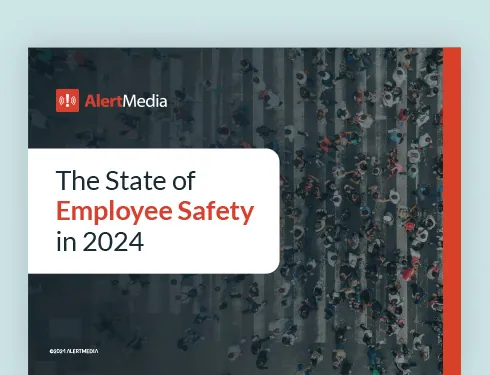
When Lone Workers Should Flee Danger
There comes a time when lone workers should flee danger, prioritizing safety over the demands of the job. Being able to communicate at that time is key.

Some professions are filled with unsung heroes, women and men who are on the front lines and in the trenches day in and day out. These roles often demand that workers venture out on their own into dangerous neighborhoods and environments.
Employers are essentially asking their people to confront the possibility of harm with bravery and resolve. But there comes a time when a lone worker has to prioritize their own safety over the demands of the job.
Assessing when a situation poses an unreasonable risk can be subjective. This is where management can help set policy and provide their employees with guidelines they can turn to when questioning whether or not to flee from danger.
But first, let’s look at who exactly a lone worker might be:
Lone workers can be found across industries including social work, home health care, real estate, oil & gas, service maintenance, manufacturing, or transportation—basically any organization with employees whose job requires them to work away from an office.
Social work, casework, and home healthcare are all roles where employees might find themselves in a potentially dangerous confrontation with clients.
These workers are vulnerable to a number of threats. Whether it’s a social worker engaging in a child welfare dispute, a home healthcare worker interacting with an emotionally unstable client, or a caseworker visiting a domestic violence shelter—certain scenarios present inherent dangers.
Proactively educating your people helps to set reasonable expectations for what constitutes an unacceptably dangerous situation. And providing workers with the communication tools they need to stay safe is an essential responsibility for any employer.
The National Association of Social Workers (NASW) published a comprehensive safety guide that managers and supervisors across industries can use as a framework for protecting their people and communicating when they should feel empowered to forego a situation.
Build a Safe Visit Plan
Fostering a culture of safety within your organization helps boost morale. It also provides a level of confidence in your commitment to your employees.
The ultimate goal in establishing a Safe Visit Plan is to ensure your people are never placed in a situation where their safety is compromised and they might have to flee.
The following structure will help guide the overall direction of the plan and give employees a starting place for determining any potential threats they might face.
Prevention
Minimizing the risk of violence is the high-level goal for any organization that employs lone workers who make visits to dangerous locations.
By using past experience and available data, employers are in a position to help their people avoid an incident from reoccurring. Factors to take into consideration include the type of incident (verbal threat, physical attack, intimidation, stalking, etc.).
Utilizing available resources can also help your people avoid harm. If the case is in the court system, there are bailiffs, prosecutors, and judges who can provide assistance. The system is there to protect staff—it’s a valuable defense that shouldn’t be overlooked.
Prevention naturally leads to the next step in crafting a safe visit plan: properly assessing risks.
Risk assessment
Social workers (or any lone workers who might be making visits to questionable locations) should take the following into consideration:
- Known factors that may pose a risk (severe weather/disaster conditions)
- Recently reported events in the neighborhood
- If cell phone reception will be an issue in the area
- Having a lone worker safety tool in place in the event of an emergency
- Whether or not the worker will engage in high-risk activities
- If the client has a history of violence or substance abuse
- What communication plan is in place to deal with a dangerous encounter
- Ensuring the worker’s vehicle is in good repair
- Main points of contact and how the employee will reach them
Taking the time to evaluate conditions that might lead to a dangerous situation will give your employees an extra level of protection and awareness when visiting clients. If the situation is determined to be too risky, it might be necessary to postpone or cancel the visit.
Training
Workers need to be familiar with your organization’s safety plan if it’s going to work. Running drills is an effective way to gauge what’s working and what might need adjustment.
Organizations should also include active shooter, aggressive client, and codeword scenarios in their training program. Conduct regular training to equip your workers with the knowledge they need to stay safe.
Even if you and your workers take the necessary precautions, unexpected dangers can still arise. For this reason, you need to clearly establish valid reasons to seek safety.
When to Flee From Danger
Social workers typically enter the profession because they feel a deep sense of service to help those in need. They’re often so dedicated to getting the job done that they’re in denial about potential danger. While certain professions are more inherently dangerous, no employee should ever be asked to engage in work with obvious risks to their safety.
Supervisors should help their workers understand they’re expected to steer clear of danger. This will make your lone workers feel more empowered to vacate a risky situation.
Here are a few general guidelines for when workers should have permission to flee:
- Threatened with physical harm
- Entering a hazardous environment (e.g., aggressive dogs or an unsafe structure)
- A client has a history of violence and has behaved aggressively towards worker
- Severe weather threats (hurricane, flooding, blizzard, etc.)
- Automotive issues that could leave the worker stranded
In addition, if an employee encounters a hostile client who clearly puts their safety in jeopardy, they do have the right to report the condition without fear of retaliation, blame, or questioning. They can always reconvene with their supervisor and return to complete the job once they have a safety plan established.
Unfortunately, lone workers sometimes find themselves in danger and unable to flee the situation. The “buddy system” isn’t the best solution as it can end up placing two people in harm’s way. This is where having a direct connection to authorities is critically important.
Safety Communication Tool
Both the NASW and the Occupational Safety and Health Administration (OSHA) recommend that organizations invest in reliable technology in order to protect their people. Management should look for a lone worker safety tool that meets the following criteria:
Zero-button solution: Hands-free safety tool that enables workers to directly alert law enforcement from a locked phone.
Timed session: Ability to schedule a preset window when workers don’t have consistent access to their phones on the job.
Audible deterrent: If a timed session expires, an audible deterrent will trigger an alarm that both startles an aggressor and alerts law enforcement.
While the ultimate goal should be to escape from a dangerous situation, having a safety tool in place helps provide lone workers with the confidence they need to perform their jobs.
AlertMedia, the leader in emergency communication software, offers a comprehensive employee monitoring solution—a zero-button safety tool that gives lone workers and employers peace of mind that everyone is kept safe, informed, and connected.




